#144
On turning 28
As a seasoned subscriber of this newsletter, you may know that I'm not a big fan of celebrating my birthday. However, since we are moving out of London for good, this occasion felt like the right chance to bid farewell to the city.
For these few weeks, I'm indulging in the pinnacles of London's culinary scene and embracing friends who have become family during our nearly six years in the capital.
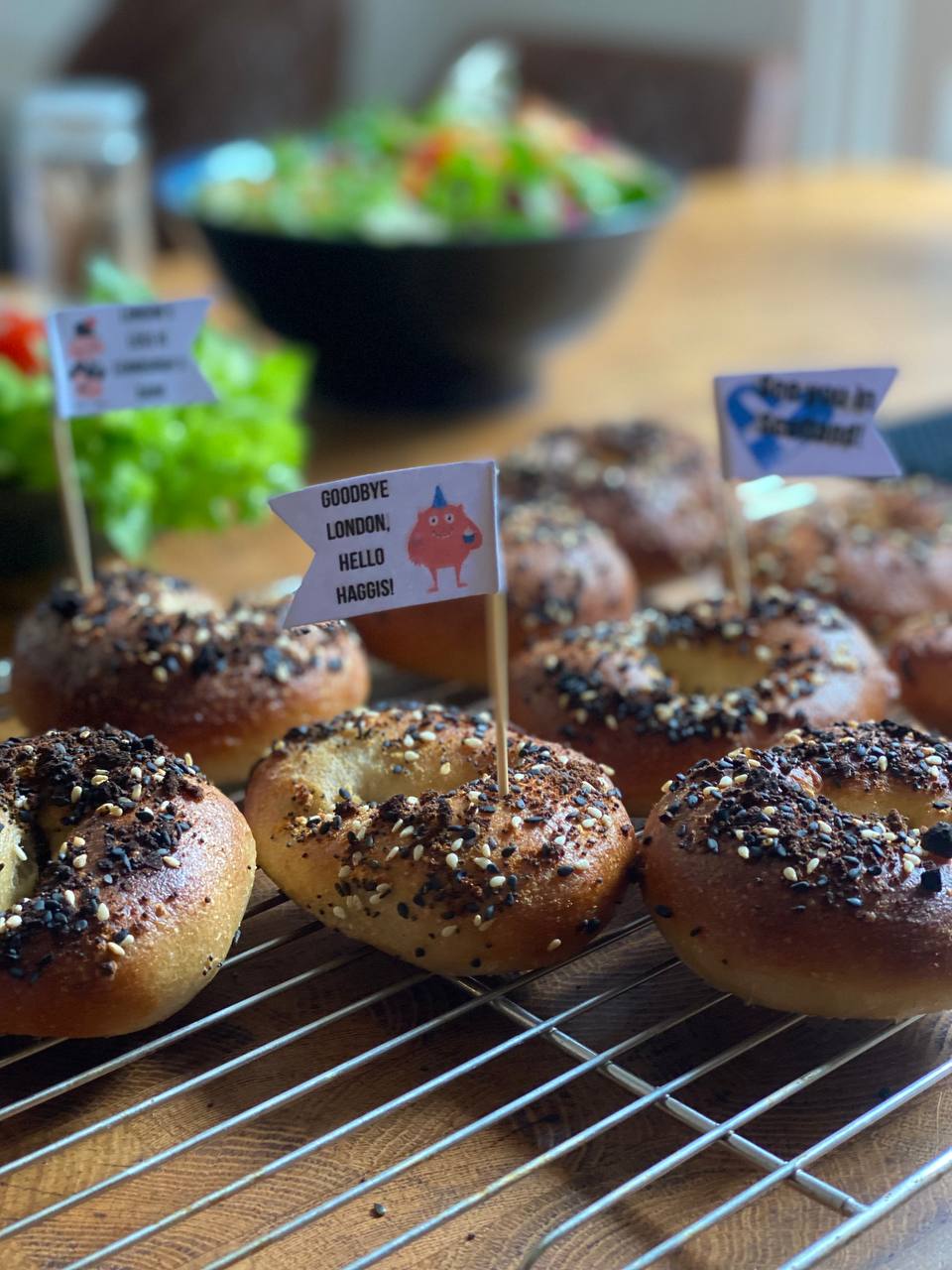
Let me spare you the details of the whole week and brag a bit about the day.
I was very lucky to wake up to some homemade cinnabons:
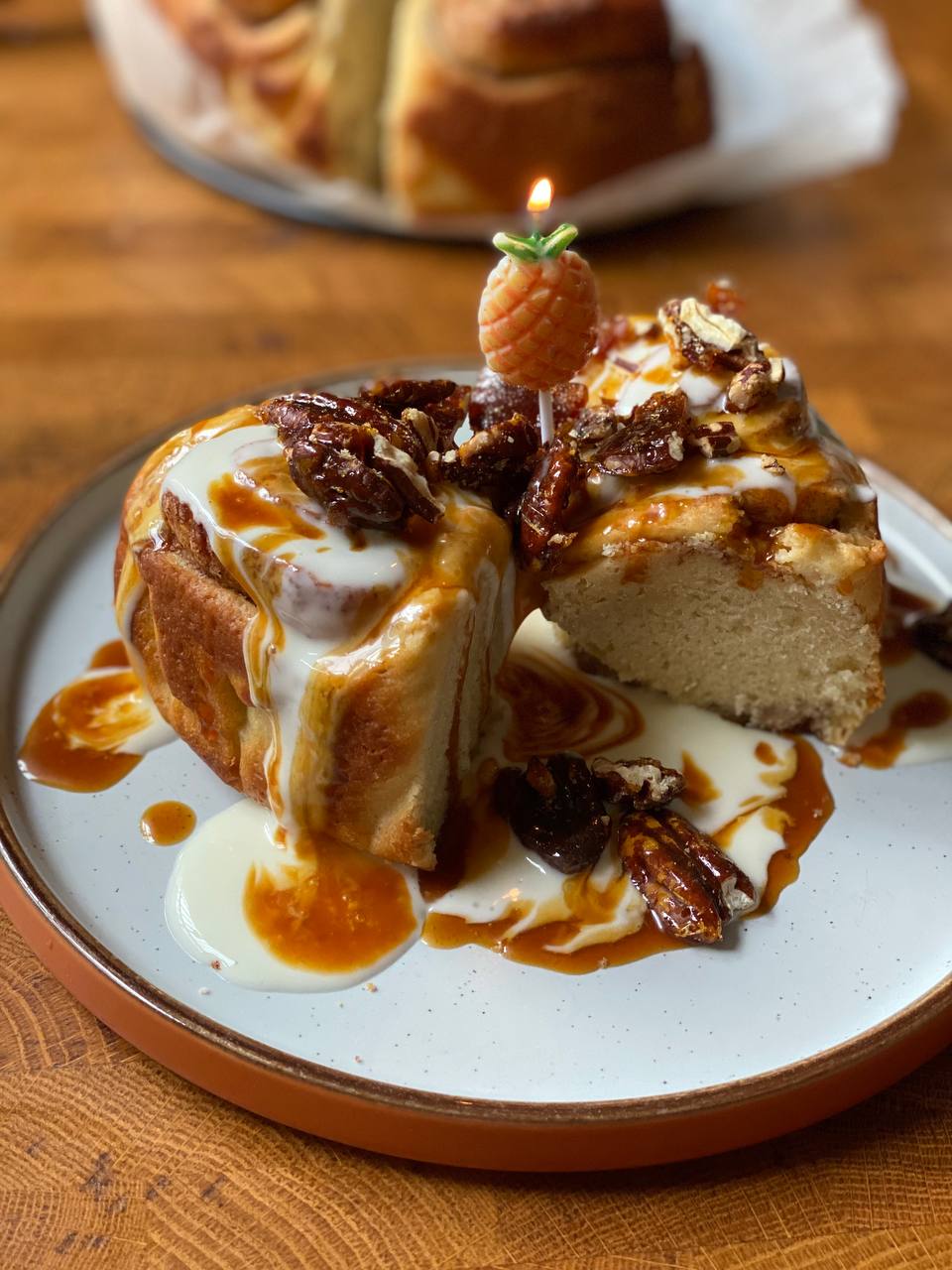
But afterwards had to abstain from food for hours as we had a table booked at Ekstedt. I wrote about the man behind the pass, Niklas Ekstedt, almost two years ago sharing my passion of his approach to Nordic cuisine in general and Flambadou oysters in particular, and here I am, eating those oysters with beurre blanc and apples:
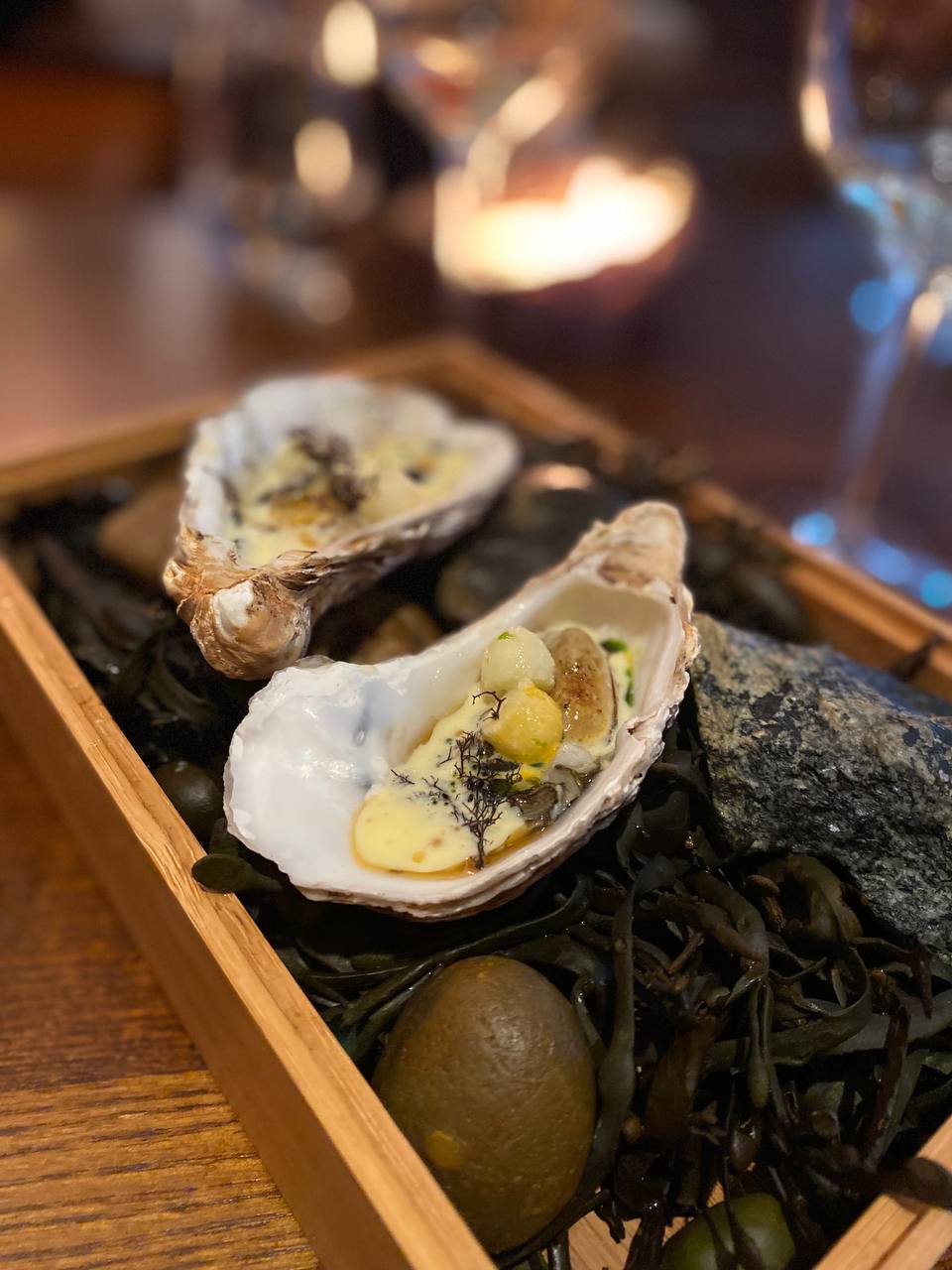
As people often say, snacks and starters are the most exciting parts of any tasting set, and I tend to agree. This hay-cooked scallop was a revelation to me, and probably one of the most balanced dishes I ever tried.
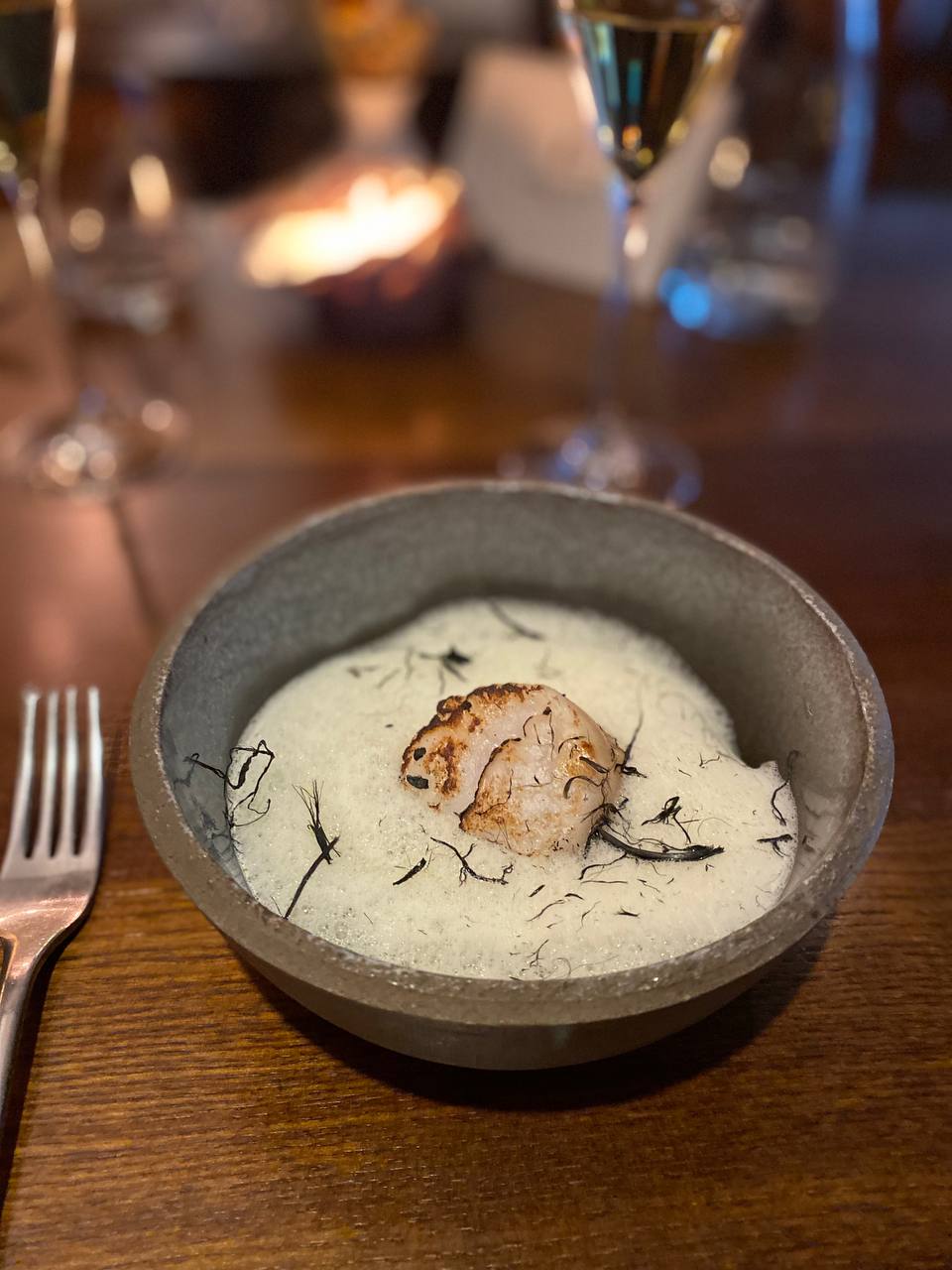
Probably the only dish I wouldn't eat again was a wild garlic foam snack, which looked fun but had more garlic flavours than a wild garlic plantation. Luckily, the wine pairing was thorough, and sherry managed to dim this aftertaste well.
The night didn't end there, and after a brief stop at an adjacent bar we went to American bar at Savoy.
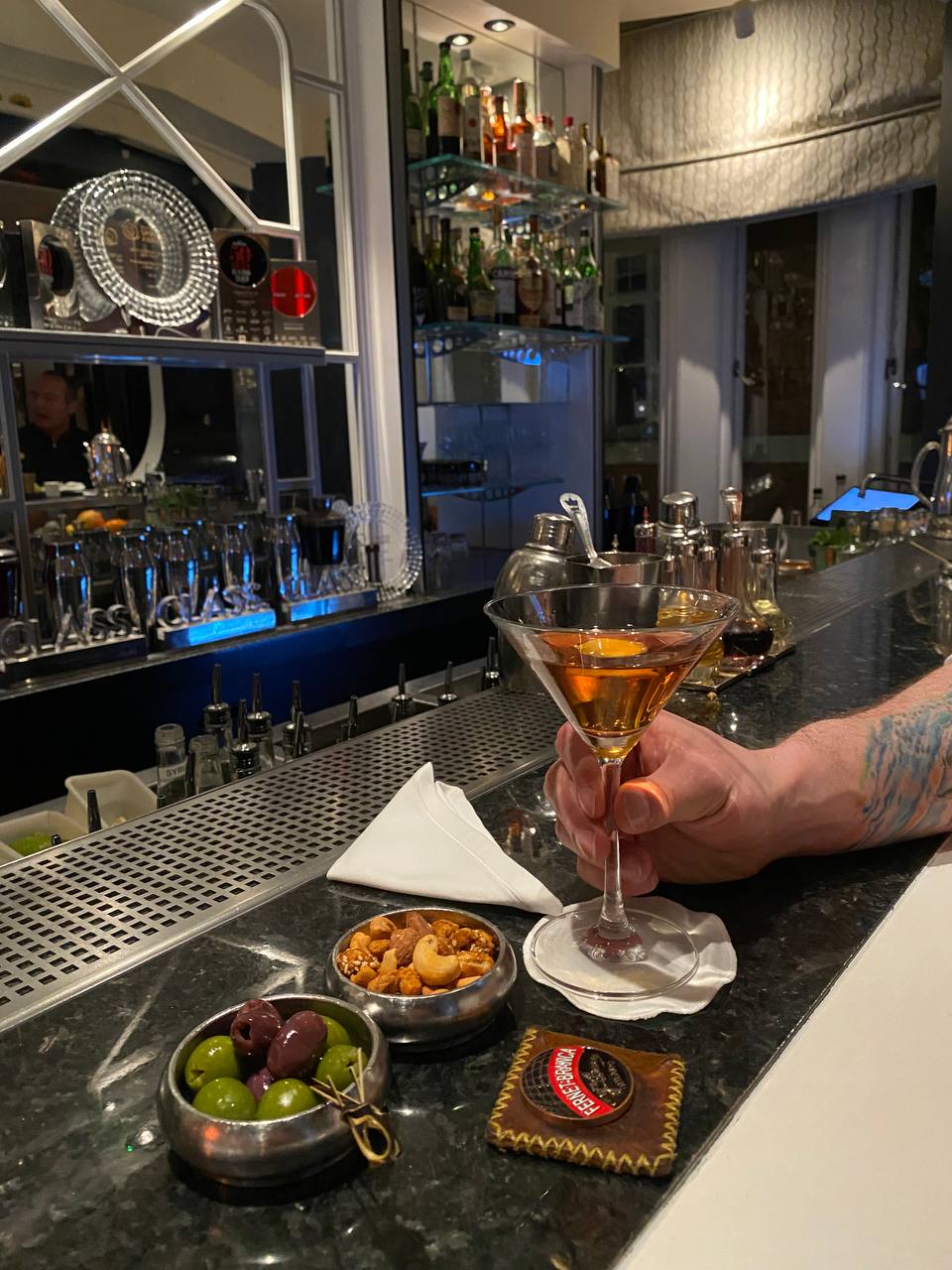
The Hanky Panky cocktail was invented here at the pass nearly a hundred years ago, and after having it at its birthplace I think I can finally mark my London todo list as completed (which ironically leaves a bittersweet aftertaste too).
Enjoying this? Get Tuesday Triage in your inbox every week.
Things I enjoyed reading
1. Making friends as an adult is hard by @kalyani_saxena and @odowdpeter
Years ago, making friends was straightforward: I'd join communities online or offline, chat for hours with strangers, and eventually grab a beer with them in a different country. Another route was somewhat involuntary: friends of school friends and kids of parents' friends.
While I've lost touch with many of these acquaintances, I'm sure we'd have a great chat in front of a roaring fireplace and a bottle of scotch if we were to meet tomorrow. It's just that maintaining those relationships requires way more energy than reviving them.
"Sociologists have kind of identified the ingredients that need to be in place for us to make friends organically, and they are continuous unplanned interaction and shared vulnerability,” says Franco, who is writing a book on making friends as an adult. “But as we become adults, we have less and less environments where those ingredients are at play."
Making new friends as an adult is harder, mostly because no one forces you anymore, and you can just "swipe to the left" without giving folks a chance. Not sure if that's a successful strategy, though.
2. End-of-Life Dreams by Paul Lauritzen
A touching but also very interesting story about end-of-life care and people's dreams:
“Medically,” Dr. D said, “Lisa is much better. Her vital signs are strong, and she is not experiencing any nausea. This is the good news. The bad news,” he continued, “is that your wife called the nurses in the middle of the night to say that she saw her parents on a boat outside the window beckoning her to come. I know this may not make sense,” he went on, “but we see this repeatedly in our patients. When patients report a vision like this, they almost always die within a day or two. I’m so sorry.” My wife died a little more than twenty-four hours later.
Most of the article focuses on end-of-life dreams and visions (ELDVs) and how they're predictive of death, but as it's a complicated subject to get a funding for the majority of physicians do not take them seriously. However, there are some doctors who think that sometimes "the best medicine is not medicine" and try to also listen to patients.
3. The gambler who beat roulette by Kit Chellel
I don't gamble but after reading stories like that I wish I would. This one is about a group of people who somehow managed to guess the outcomes of roulette games without using any gadgets (and police couldn't find anything suspicious either).
London casinos were some of the first to order new equipment to meet the specifications. The Ritz changed all its wheels within months. Word spread quickly. At an industry event in Las Vegas, Barnett asked an audience of gambling executives how many thought it was possible to predict roulette. Hardly anyone raised a hand. By the end of his presentation, when he asked again, almost everyone did.
Seems like the most realistic theory is that roulettes without proper maintanance become more predictable for a bunch of reasons, from a slight incline to a nearby fan. And some people can use this to their benefit.
4. The Sweet History of Lemonade by Anne Ewbank
It's not summer yet but it's better to be properly prepared beforehand, especially when lemonade turns out to be way more complicated than you might think:
Simple or expensive, boozy or dry, egg-filled or thankfully egg-free, lemonade is immensely adaptable to the tastes of the times. Perhaps that’s why it has such a colorful history: Over the centuries, lemonade has been held to be both medicinal and pleasurable, incredibly humble while also the favorite subject of master painters. Make yourself a glass, and let’s dive into lemonade’s sweet history.
I am still wrapping my head around the fact that it's still in some countries and is sparkling in the others (of course it's sparkling!), but at least we don't use eggs to make it anymore.
5. People Are Sick and Tired of All Their Subscriptions by @MoiseNoise and @rachelbwolfe
I've been thinking of shipping at least some indie app before I turn thirty, and subscriptions seem to be the most straightforward way to make sure the further app updates are funded, but seems like in the current economics people slowly figure out that it's not sustainable.
About a third of respondents to a December Credit Karma survey said their biggest financial mistake last year was paying for services they never used. Americans were also paying about $133 more than the $86 they thought they were paying for subscriptions each month, according to a 2022 survey from market research firm C+R Research.
At least I don't build a subscription platform, right?
6. An On-Ramp to Flow by Bradley Buda
Some people struggle to push themselves to do something but I am often the opposite and can't stop in time. This is a great advice for when you actually manage to stop, and it helps a lot to kick things off the next day:
Obviously Broken - when you return to your coding session, the next thing to work on should be screaming out at you. Ideally you leave your working state in a place where a compiler or unit test is loudly failing, so your tooling can act as external memory to remind you of where you were when you previously stepped away from the problem. TODO comments can also work here, but when you sit back down at your workstation to start coding again, you should immediately know what needs to be worked on next.
The idea is that if you have something broken but straightforward enough, you can quickly put your mind to the right track and then just take it from there. I didn't have the chance to wrap it into the right words but have been using the same trick for years (and no, that's not my excuse for constantly broken tests).
7. How I Used Stable Diffusion and Dreambooth to Create A Painted Portrait of My Dog by @jakedahn
One of my upcoming projects is to treat myself to a tattoo partly drawn by an AI. I will share more details in a few weeks: the initial drafts are done with GPT-4 to generate prompts and then with Midjourney to turn them into art, and everything is with an artist now as I also want a human touch to it.
But in the meantime you can read a story/tutorial from someone who did a similar thing to turn their dog's photos into a painted and framed portrait.
An even more popular technique is Dreambooth, and that is what we will focus on for the remainder of this blog post. I will walk through my entire workflow/process for bringing Stable Diffusion to life as a high-quality framed art print. We’ll touch on making art with Dreambooth, Stable Diffusion, Outpainting, Inpainting, Upscaling, preparing for print with Photoshop, and finally printing on fine-art paper with an Epson XP-15000 printer.
I must say, the print looks really cool and while I don't think Dreambooth would work for my purpose it's still pretty powerful: definitely something to keep in mind.
8. De-stressing Booking.com by Alex Charlton
As I mentioned, we are moving out of London which implies lots of bookings, and the pressure from all these "1 room left" popups is real.
This doesn't feel like a healthy way of selling. Apart from raising my anxiety levels during what should be the enjoyable process of planning a trip, if I'm being presented not with clear availability stats but unqualified red-alert scarcity warnings then I start to mistrust the site.
That's a great example of how classic business tricks to sell more rooms faster piss users off, but are not inconvenient enough to make people use a different product. At least someone built a Chrome Extension to fix this.
9. The Case of the Fake Sherlock by David Gauvey Herbert
Most longreads I read are success stories; this one is an exception despite being about a detective:
Many of his misdeeds were a matter of record before he ever stepped foot in Coquille. And yet Walter continued to operate with impunity, charging as much as $1,000 a day as a consultant. America’s fragmented criminal-justice system allowed him to commit perjury in one state and move on to the next. Journalists laundered his reputation in TV shows and books. Parents desperate for closure in the unsolved murder of a son or daughter clamored for his aid. Then there was Walter’s own pathology. He so fully inhabited the role of celebrated criminal profiler he appeared to forget he was pulling a con at all.
One would think that given the period of time and publicity the person has, people would stop wasting their money but seems like that's just wishful thinking.
10. In Tokyo's “Subcal” Bars Anything Goes by Alex Enrenreich
Japan never ceases to amaze me:
Subcal nightlife is different. These bars, by and large, are populated by regulars, though the bargoers would likely describe themselves as anything but regular. No matter the taste, there’s a subcal for everyone—leather fetishists, train enthusiasts, drag performers or those who want to enlist in a fantasy military boot camp for the night. Many of these venues are welcoming to newcomers, even if they aren’t a card-carrying member of that specific subculture. Here are some of the best places to get started, through the eyes of those who frequent them.
The article lists a few examples (with addresses if you're heading there soon), but it probably requires further research given somewhat boring menus.
The only cool one from the list is the one where the more regular you're the higher your rank is, hence the more complex cocktails are available to you. All those newcomers drink their beer and vodka shots, nice.
Did you know I make apps?

Murmur
I used to avoid phone calls. Now I practice them first — job interviews, doctor appointments, that call to the bank you've been putting off.
Take a look →Things I didn't know last Tuesday
1. Nyotaimori
And continuing on the topic of Japan, here is another fun tradition I learnt about:
Nyotaimori, often referred to as "body sushi", is the Japanese practice of serving sashimi or sushi from the naked body of a woman.
Look up the pictures yourself please, I wasn't sure if my mail provider could ban the newsletter for NSFW content.
2. 'Planet' in Singapore
Just came across this piece of public art and it's so cool:
In the heart of Singapore's vast Gardens by the Bay, a colossal baby floats weightlessly as if in zero gravity—or in his mother’s womb.

The sculpture is made in painted bronze and steel and I never thought something like this could look so lightweight.
3. A WWII spy who hid codes in her knitting
A yet another example of why no one is surprised agent 007 is British:
She also explained how she concealed her codes: "I always carried knitting because my codes were on a piece of silk – I had about 2,000 I could use. When I used a code I would just pinprick it to indicate it had gone. I wrapped the piece of silk around a knitting needle and put it in a flat shoe lace which I used to tie my hair up."
While reading more about the patterns I came across adversarialfashion movement who sell pieces of clothes that trick licence plates parsers and other CCTV into reading wrong data. So cool, now I need a hoodie (but they also make scarfs with this code).
4. The Coronation Quiche
In a few weeks London will be full of people celebrating the coronation. Apparently, the highlight of the lunch will be this quiche:
In celebration of Coronation Big Lunches taking place over the Coronation weekend, Their Majesties have shared a recipe for a Coronation Quiche - featuring spinach, broad beans and tarragon.
I can't really complain about tarragon but frankly the rest of the recipe looks less exciting.
5. Killing sparrows led to Great Famines in China
Sparrows were eating grain so some Chinese genious in 1950s decided to kill them to prevent the economic collapse and it didn't go as planned:
Sparrows worldwide are natural predators of many insects, including crop-damaging locusts. Locusts didn’t make Mao Zedong’s pest list since the sparrows consumed them along with the grain, controlling the insect population. Removing sparrows as the predator in its ecosystem would soon prove devastating for China.
Partly due to that, China lost over 15 million people during the Great Chinese Famine in the late 1950s.
6. Where do nutrition labels come from?
I didn't know that nutrition labels are so recent and originally weren't mandatory:
To address the many confusing claims that greeted shoppers at the supermarket, in the early 1990s the FDA began requiring that all packaged food bear a standardized Nutrition Facts label. This was meant to be not just a source of information but an educational tool—it included the now-familiar “% daily value” column based on the US Department of Agriculture’s estimates of how much of various nutrients a roughly average American should eat.
Judging by the historical health reports from the States I am not so sure if they're efficient though.
7. Why flying insects gather at artificial light?
Finally a simple explanation of why flies are so attracted to light bulbs.
Contrary to the expectation of attraction, insects do not steer directly toward the light. Instead, insects turn their dorsum toward the light, generating flight bouts perpendicular to the source. Under natural sky light, tilting the dorsum towards the brightest visual hemisphere helps maintain proper flight attitude and control. Near artificial sources, however, this highly conserved dorsal-light-response can produce continuous steering around the light and trap an insect.
So insects turn their backs to the light, but with artificial light it becomes very confusing and they occasionally get trapped.
8. Mexico is way bigger than I thought
Every few months I find out that another country is bigger (or smaller) than it seems. I've already got surprised in the past that Russia is actually not as big as I used to think, and Africa is way bigger than I thought, but Mexica seems to be huge as well:
The United Kingdom, Germany and other 21 European countries fit into Mexico.
There are a few images and a projection video if you were to follow the link.
9. Inanna’s Amurdinnu
This is for those familiar with Mesopotamian gods, but I was really curious about the meaning behind their artifacts and this is one of those:
The Akkadian word for the rose depicted in this art is amurdinnu, which translates specifically to a wild rose bush with pronounced prickles. The plant that historians think is most likely to fit the written and visual descriptions of Inanna’s amurdinnu is Rosa canina var dumetorum. Dog Rose is a species rose with small, five to eight-petaled blossoms and curved canine-tooth-like prickles. Like other species roses, Dog Rose will grow into large dense thickets if left unattended.

10. Mary Quant
I thought miniskirt is way older than 60 years old, but apparently we can even tell who is behind its invention:
She became an instrumental figure in the 1960s London-based Mod and youth fashion movements, and played a prominent role in London's Swinging Sixties culture. She was one of the designers who took credit for the miniskirt and hotpants.
At least I've heard about Swinging Sixties before.
Book of the week
Friends gifted me the Luke and Stacey Sherwood-French's Behind the Pass book, which is a collection of recipes from chefs all over UK.
Hot topics are always surrounding our industry, with working hours, work-life balance and fair pay a constant conversation We've celebrated those that, like us, are working towards a better hospitality industry: one that inspires young people or those with a passion to re-enter. We want them to know that there can be a good work-life balance and fair working hours, unlike the industry we were trained in. We've been there, we've done that, and we've got the stories.
The number one question we get asked by friends, family, guests and followers is where we recommend eating out. From this, Behind The Pass was born. This book is a celebration of and a guide to the places we would recommend, not only based on the food and experience, but all the attributes mentioned above. It features restaurants across the country so that as many people as possible can find one nearby, or to make a special journey to. Believe us, they are worth it! We've been fortunate enough to work with everyone who features in this book, and each individual has contributed a very special insight into their cooking and life to help us create Behind The Pass. This is a unique collection of recipes, including some never published before, and we are extremely grateful to all our contributors.
We have travelled to each of the restaurants and our chefs have kindly given their time and recipes to support us in promoting hospitality across the UK in 2023. Through personal interviews with ourselves and our chefs, we hope to give you an insight into what we know about each of these talented, hardworking people. Thanks to everyone's determination to build a better hospitality industry, you'll also see how these chefs are working to provide careers and inspire ambition.
That's enough from us; we'll let the chefs themselves tell you the rest. We hope you enjoy this experience.
I've been to some of the restaurants mentioned there, and heard about the rest, and the book gives an incredible insight into the minds of both famous chefs and rising stars within the British culinary scene.
Each chapter lists a few recipes and a brief interview with a chef to highlight some tips, stories, and tricks that might be useful.
I was also quite surprised that the recipes have a good mix of both easy home dishes and proper weekend projects: paired with a cast iron tortilla press I think the next weekend I will try to follow KOL's recipe for pork tacos.
A wonderful gift and lots of room for inspiration.
Thank you and see you in a week
(or in a month)!
If you'd like to support the newsletter, please subscribe to the weekly plan. Otherwise you will keep receiving the letters on a monthly cadence – no need to do anything to opt-in.
If you have any questions, or want to suggest a link for the next newsletter, please drop me a message on Twitter or reply to this email.
Cheers! 🍸
Need help with iOS?
I spent a decade on FDA-regulated medical devices and apps with millions of users. Now I help teams ship MVPs, rescue messy architectures, and build the hard bits that don't fit in a sprint.
Learn more →